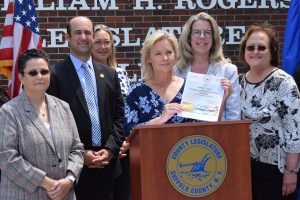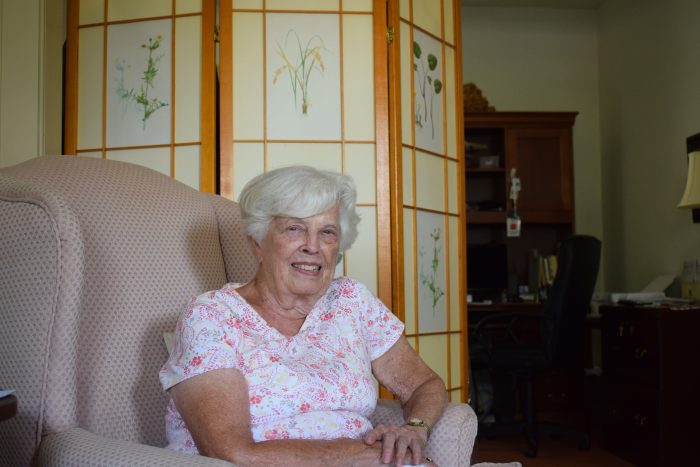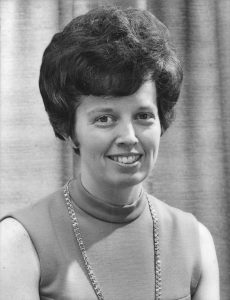A new website dedicated to addiction and mental health resources has been unveiled to provide residents with easy-to-access services for those who are struggling.
On Thursday, July 22, Suffolk County legislator and chairwoman of the county Legislature Health Committee, Sarah Anker (D-Mount Sinai), joined county Department of Health Services Commissioner Gregson Pigott, county Division of Community Mental Hygiene Services Director Cari Faith Besserman, together with members of the county Department of Information Technology and the county Addiction Prevention and Support Advisory Panel outside the William H. Rogers Building in Hauppauge to announce the launch of the website suffolkstopaddiction.org.
The webpage was created by Resolution No. 34-2021, introduced by Anker and unanimously passed earlier this year.
The legislation directed the county Department of Information Technology and the Department of Health to collaborate to create a comprehensive webpage dedicated to addiction, mental health, substance use disorder prevention and rehabilitation services. The webpage features sections that include important emergency numbers, substance use disorder and mental health information and resources, and a list of treatment providers compiled by the county Division of Community Mental Hygiene Services.

“I want to thank the Suffolk County Department of Health Services, the Division of Community Mental Hygiene Services and the Department of Information Technology for their tireless work they put into creating this webpage,” Anker said. “With the concerning rise in addiction and mental health issues after a challenging year, our hope is that this webpage will help increase the accessibility of the possibly life-saving resources that are available through the Suffolk County Health Department and improve our ability to reach those who are in need of help in our county.”
Anker sponsored the resolution in response to the growing opioid and substance abuse epidemic in the county and across the U.S.
During an October public hearing, Victoria Sunseri, a Suffolk County constituent in the medical field, noted that it was difficult for providers to locate mental health and/or addiction resources for their patients. The panel members echoed the importance of providers being able to connect a person to treatment options and for residents to find important information in a user-friendly way. In response, Anker facilitated the creation of the webpage singularly dedicated to addiction and mental health resources and services.
“Throughout the pandemic, we have received a surge in calls from individuals seeking mental health resources from crisis intervention to addiction rehabilitation,” Sunseri said. “This mental health hub will serve to empower individuals by reducing the time and frustration they might experience while seeking help appropriate to their needs and by streamlining reception of services through increasing the salience of who does what, where and how.”
This comes just days after the county Legislature convened July 12 to consider and vote on certificates of necessity concerning settlements with several defendants in the county’s pending opioid litigation. These certificates were approved promptly after legislators met in executive session to discuss details related to the litigation.
On Feb. 3, 2015, county legislator and current presiding officer, Rob Calarco (D-Patchogue), introduced legislation to establish a six-member committee to determine the viability of legal action against drug manufacturers and ascertain Suffolk’s costs due to the over-prescription of opioids.
Following this study, Calarco spearheaded the resolution that authorized the special counsel to commence legal action(s) against all responsible parties. The law firm of Simmons Hanly Conroy LLC was retained, on a contingency basis, to represent the County of Suffolk in this complex litigation.
Suffolk County was one of the first three counties in the United States to act against opioid manufacturers in 2015. The counties of Orange and Santa Clara in California and the city of Chicago took similar action in that same period. These settlement dollars will be used in accordance with any requirements outlined in relation to such settlement and, in all likelihood, will be put toward educational programming, treatment and other related efforts to remedy the impacts of this crisis.
According to a Calarco press release following the July 12 special meeting, settlements were approved with Rite Aid of New York $1.5 million; CVS $3.5 million plus the additional amount of $500,000 if certain settlements are reached with other defendants; Walmart $3,062,500; Walgreens $5 million; Johnson & Johnson a sum between $8.4 million and $19.8 million over 10 years “to be used for restitution and abatement and agreeing not to manufacture, sell or promote opioids going forward”; and between approximately $10.4 million and $19.6 million over nine years from the Purdue/Sackler family.

“When we began to experience this crisis, it quickly became apparent that our constituents were being overprescribed opioids, and this negligence is what led to the widespread addiction in our community,” Calarco said. “Pharmacies had a responsibility to track the distribution of these medications carefully. Their failure to do so furthered the impact of this crisis by allowing individuals to pharmacy shop to obtain more of these powerful drugs. The pharmaceutical companies and their affiliates knew that they were pushing a highly addictive drug that was unsafe for long-term use. Yet, they proceeded anyway, all in the name of turning a profit.”
He added that while these settlements cannot repair the damage done or bring back those who we lost to the grips of this epidemic, it has already made a substantial impact. Doctors are now prescribing medication differently, and two of the major manufacturers of these dangerous medications will cease production for good.
“With this settlement, we are going to have substantial resources that we’re going to be able to put into this epidemic that’s been plaguing our county for so long, and to be able to make sure that our residents had the ability to get connected to treatment services to prevention services,” Calarco said at last Thursday’s press conference. “There are windows of time, where you have clarity, and you recognize that you need help. … We need to make sure that we have the resources there for you at those windows, so you can take advantage of that help. That’s what this resource guide is about — it’s about making sure that you know where to go.”



 Frederick J. Gumbus “Pop”, 97 years old of Port Jefferson, died May 9.
Frederick J. Gumbus “Pop”, 97 years old of Port Jefferson, died May 9.
 Peace, love and music will be the themes of the day when the first annual Port Palooza heads to Harborfront Park’s Jill Nees Russell stage, 101 E. Broadway, Port Jefferson on Saturday, July 31 from 11:50 a.m. to dusk.
Peace, love and music will be the themes of the day when the first annual Port Palooza heads to Harborfront Park’s Jill Nees Russell stage, 101 E. Broadway, Port Jefferson on Saturday, July 31 from 11:50 a.m. to dusk. 


















